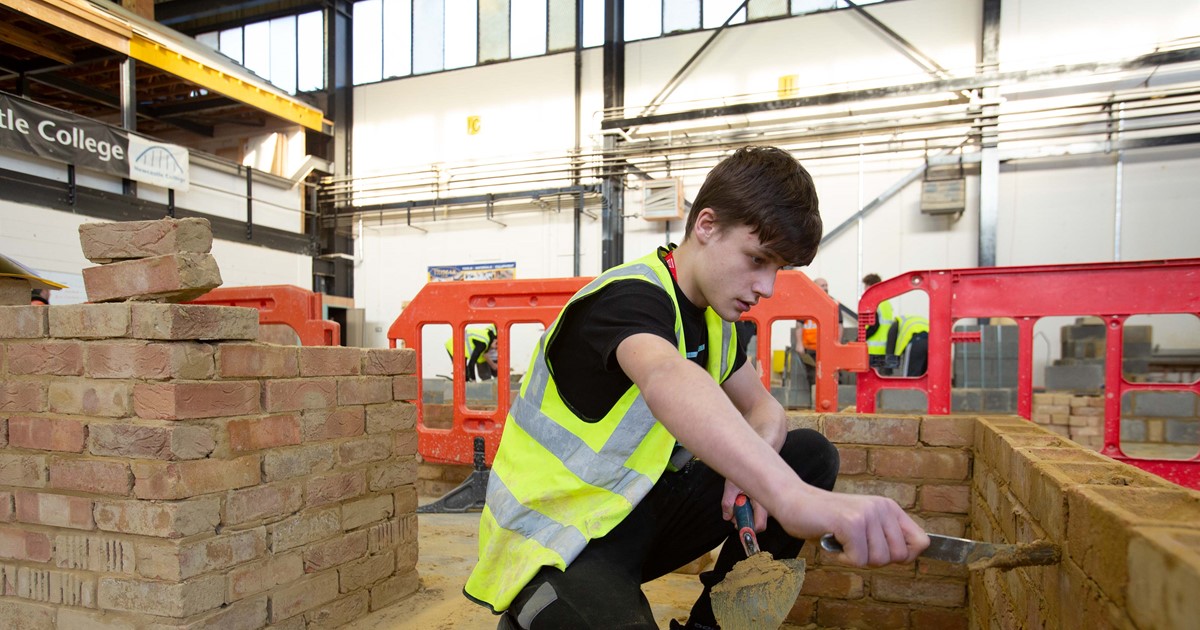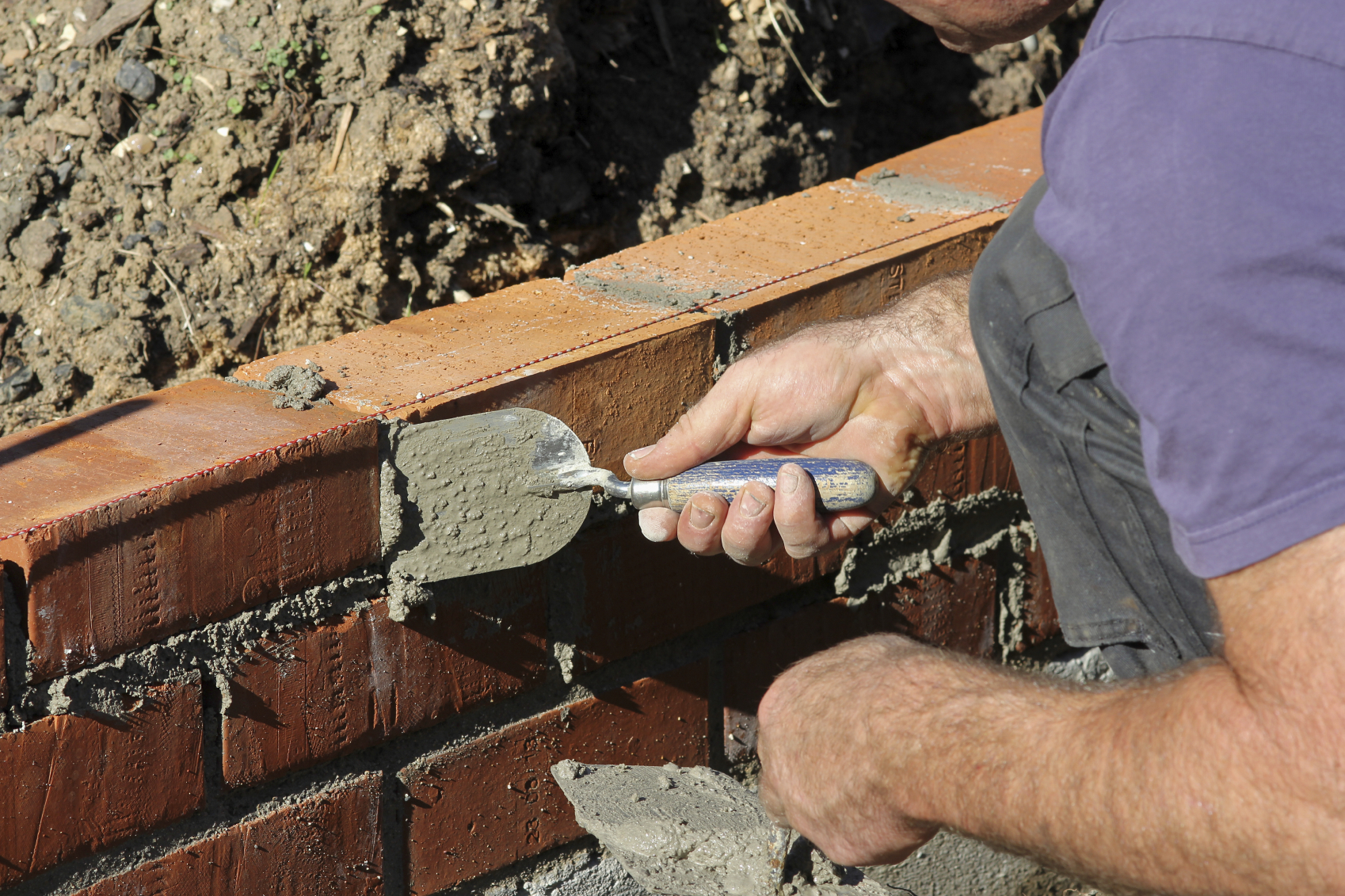The Bricklayer Auckland Statements
Wiki Article
All About Bricklayer Auckland
Table of ContentsThe Ultimate Guide To Bricklayer AucklandThe 6-Minute Rule for Bricklayer AucklandMore About Bricklayer AucklandThe Ultimate Guide To Bricklayer Auckland
If these walls are prepared to be stopped at door height (as generally performed in the tiled roofs with ceilings), the wall surfaces ought to not be quit specifically at top of the door degree as well as abruptly left at that degree. One layer of bricks ought to be laid over the door framework and throughout the size of the wall and also after that only the dividing wall surface need to be finished (Bricklayer Auckland).MUST-READ: Kinds Of Bonds Made Use Of In Brick Masonry Wall Building And Their Makes use ofJust how to Safeguard and Brickwork ought to be safeguarded from rainfall by suitable covering when the mortar is eco-friendly. Preferably healing of brickwork, especially in cement mortar, is done (as in concrete job) by extensively saturating it with water after setting of mortar (preferably after covering it with straw, hessian, gunny bags, etc) for fourteen days.
Where the scaffolding pole relaxes on the wall surface, just one header block shall be excluded to make sure that the bond of the wall can conveniently be made total as well as perfect after the scaffolding is removed. Such holes will not be allowed areas such as in pillars or columns (much less than one metre in width) lugging heavy tons.
Bricks can be laid as part of the building and construction of wall surfaces, structures, columns as well as various other frameworks. Really extensively, blocks can be laid as soldiers (standing upright), cots (laid lengthwise along the wall surface) or headers (laid width sensible along the wall surface). Prior to starting to lay bricks, it is essential to calculate the variety of blocks required.
Facts About Bricklayer Auckland Revealed
The blocks should be set out at both ends of the structure, with a string line stretched in between them to act as a guide when laying the very first programs of blocks. It is additionally suggested that guideposts are made use of hardwood boards driven right into the ground at either end with markings to make sure the blocks are laid level. The first block need to be laid at one end as well as touched a little to 'bed in'. The following brick should be 'buttered up' with mortar spread onto each end prior to being placed to abut the very first brick. The trowel ought to be utilized to remove excess mortar that is ejected from beneath or in between the blocks. To accomplish staggered vertical joints, some blocks might have to be halved. A mark should be made on the block where the cut is to be and also, after positioning on strong ground, a sharp impact used a bolster chisel as well as lump hammer. Rough edges can after that be chipped off.To continue to be degree, the wall must be constructed up at both finishes a course greater than the one being dealt with. This will certainly make it show up tipped at each end. The lower training courses are filled out from the ends inward, each end constructed up one training course higher, and more.
columns can sometimes be included part-way along or at the end of a wall. Generally, this is a 'mini-wall' that extends out from the primary wall to create a column. A block need to be placed side-on to the end of the wall surface at the point where the pillars are to start. The level ought to be inspected after each training course is finished. Prior to the mortar sets it is very important to fill in any type of openings, before striking (aiming) them to give a neat and neat coating. The brickwork can after that be cleaned with a soft hand brush to eliminate any kind of excess mortar. Block construction is one of the longest-lasting and most safe and secure ways to create a framework. There are many kinds of building utilizing bricks as well as lots of different items that can be produced - Bricklayer Auckland. Over the centuries, there have been many building and construction methods developed that help with various frameworks, such as homes, fireplaces, wall surfaces as well as simple pathways or patios.
By far, the most typical kind of block building is the creation of walled structures. No issue whether the structure itself is a property-dividing wall or an entire manor built of bricks, much idea as well as effort goes right into each development. Many homes use block building and construction designs such as the Flemish bond, unique for its rotating brick laying, one-brick thickness and also exceptional strength (Bricklayer Auckland).
The Single Strategy To Use For Bricklayer Auckland
A block fireplace is a resource of heat and also improves any area aesthetically, yet it likewise is one of the most challenging kinds of building. These structures are constructed within a home, typically as it is being created.
The thick header bond and also rat-trap bond are preferred building and construction design selections when making a fireplace. Creating a block pathway or brick driveway is a prominent approach of including long-lasting dependability read this article and also aesthetic attract the grounds of a house. Blocks are laid into the ground so they can be strolled or driven over.

Zig-zagging herringbone bonds and the rotating basket weave bonds rate for walkways and driveways. Similar to a driveway, a brick patio provides a degree, secure location for outside lounging. These see this website block building and construction frameworks normally are additionally installed into the ground and usage bold patterns, such as the basket weave and herringbone.

What Does Bricklayer Auckland Mean?
From these bricklaying patterns, an unlimited variety of individualised bonds and click here now also patterns can be produced. Please note that when we reference headers and stretchers, we are referring to the typical brick orientations. Composed of cots set in rows and after that balanced out by a fifty percent brick, the stretcher bond is just one of the most typical as well as well-used bricklaying patterns.Report this wiki page